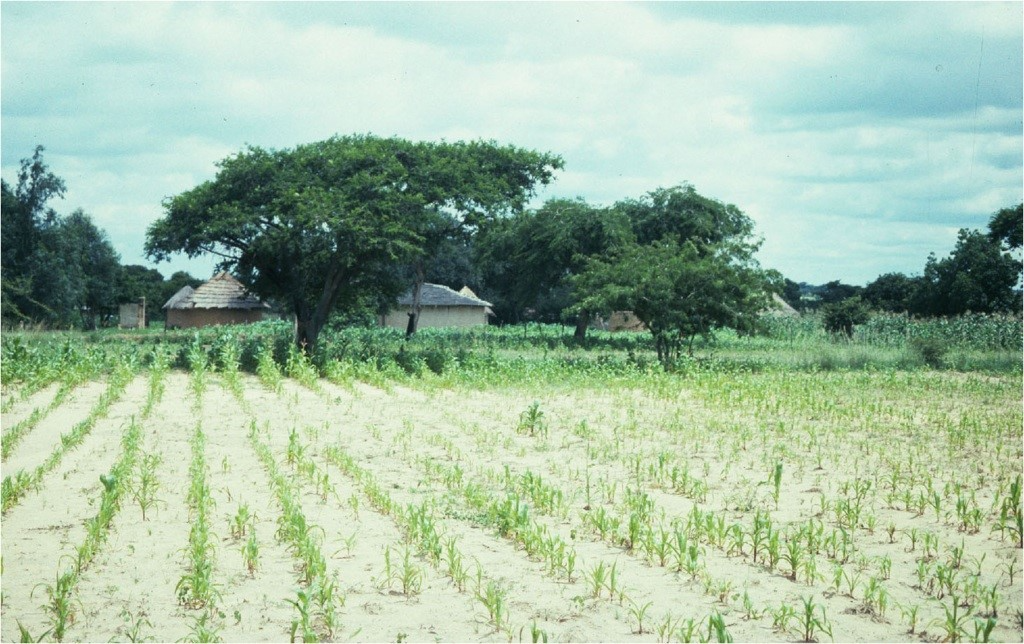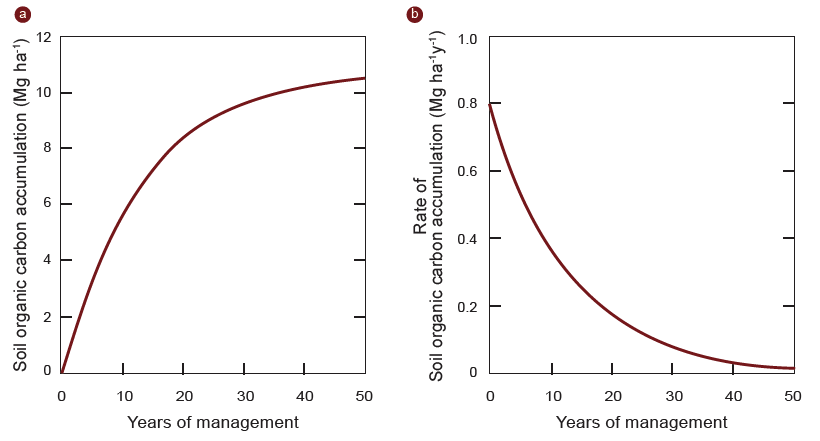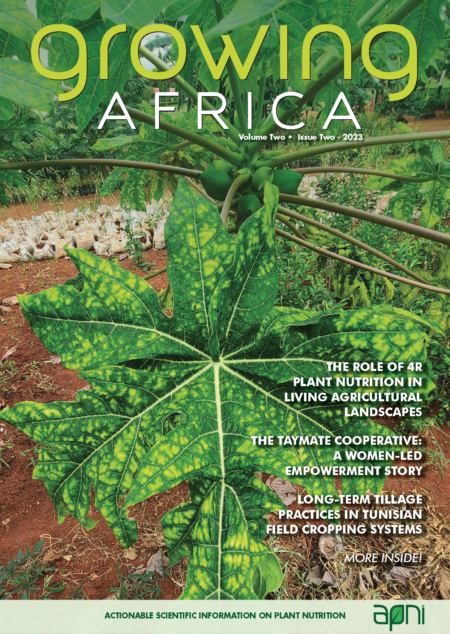By Ken E. Giller
Regenerative Agriculture is taking the world by storm! Civil society, agribusiness, farmers, NGOs, multinationals—and increasingly researchers—are aligning around this new paradigm. But what is Regenerative Agriculture? What does it mean for the way we produce our food and for agricultural research in Africa?
I first heard the term Regenerative Agriculture in 2019 at an advisory meeting of a major food company. As an agricultural researcher I was embarrassed that I was not better informed, so together with an assistant we ran a quick scan of the topic. We found surprisingly little information in the scientific literature. But Regenerative Agriculture was everywhere on the Internet, in particular on YouTube and Twitter, and a large body of farmers were communicating on this topic. Over the course of 2020 a large number of companies started to make commitments to move towards Regenerative Agriculture in their supply chains, and many international environmental NGOs such as Greenpeace and The Nature Conservancy aligned with the concept. The basic narrative was that “the food system is broken” and Regenerative Agriculture could play a key role in fixing it. Although the idea of ‘broken’ food systems is often repeated, what is meant is unclear. Many commentaries point to an agricultural crisis: a collapse in soil health, the sixth mass extinction of biodiversity, and the plateauing of crop yields. This begged the question as to why Regenerative Agriculture was gaining so much attention and demanded a deeper analysis. Here I provide a synopsis of the paper we wrote to try and understand the buzz around Regenerative Agriculture (Giller et al., 2021), and I specifically ask the question regarding what this means for Africa. In doing so I draw on papers from a special issue on ‘Biomimicry and Nature-based Solutions’, which I edited together with Jim Sumberg (see Sumberg, 2022).
As we dug into both the academic and grey literature, we found that the term Regenerative Agriculture had actually been around for a long time. It originated in the early 1980s from the Rodale Foundation, which is seen as the home of organic agriculture the USA. A particularly useful article that I found in my personal archive was published in a conference proceedings from Tanzania by Richard Harwood (1983). I knew Richard Harwood through his advisory role as chair of the board of the Tropical Soil Biology and Fertility programme, of which I was also a member in the 1990s. The vision of Regenerative Agriculture portrayed by Harwood (1983) was one of closing nutrient cycles with less dependence on external inputs and a high degree of local and regional self-reliance. What Regenerative Agriculture actually entails today remains a hard question to answer. Because of the lack of any agreed definition the term is interpreted in many different ways (Newton et al., 2020). Nonetheless there is convergence that Regenerative Agriculture addresses two main issues: soil health and biodiversity loss. A synthesis of available reports indicated general agreement around a set of principles which include: 1) activities that encourage infiltration and percolation of water and prevent soil erosion such as minimizing tillage and maintaining soil cover, 2) practices that build soil carbon (C) and greater reliance on biological nutrient cycling, 3) practices that foster plant diversity, such as diverse rotations, 4) integration of livestock, and 5) reduced reliance on external inputs. Although many of these principles can be argued to lie at the heart of good agricultural practice, many suggested Regenerative Agriculture practices such as compost tea, permaculture and holistic grazing could be regarded as rather fringe approaches that are not generally applicable on most farms. Further, some of the principles appear to be difficult to implement together, for example, if land is prepared using zero or minimum tillage the need for herbicides to control weeds is increased.

The promise of Regenerative Agriculture to address climate change
Interest in Regenerative Agriculture is clearly driven, at least in part, by the promise that sequestration of C in soil can help to mitigate climate change. For example, one organization promoting Regenerative Agriculture, ‘The Carbon Underground’, is supported by a bewildering array of organizations including multinational companies, different food brands, research institutes local and regional policy organizations, and civil society NGOs. For many companies, their interest in Regenerative Agriculture is linked to their commitments to drastically reduce, or achieve net zero, C emissions in their supply chains. Perhaps fortunately, an exaggerated claim that locking up C in soil could compensate for all current emissions of greenhouse gases has led to some ardent supporters of Regenerative Agriculture to call attention to the misleading nature of this statement.
In essence, overblown estimates of soil C storage are due to rapid rates of C accumulation being extrapolated linearly into the future. Yet we know that if more organic matter is added to soil, the initial rate of soil C increase will be rapid, but that the rate will attenuate as a new equilibrium value is reached (Fig. 1, Baveye et al., 2018). While the attention to building soil C stocks is welcome, the primary benefits are in providing a good environment for crop growth rather than a means to solve a climate crisis (Powlson et al., 2022). The contribution to climate change mitigation from building soil organic matter should be seen as a secondary benefit of ensuring soil fertility and soil health, rather than the primary objective. It should be acknowledged that there is clearly disagreement within the scientific community on the importance of soil C sequestration in mitigation of climate change. Yet there is increasing concern (e.g., Janzen et al., 2022) that earlier claims of the amounts of C that can be stored in soil were overly optimistic and attract attention away from the urgent need to reduce greenhouse gas emissions.

The magical role of soil biodiversity
FAO recently published a collection of 10 children stories rather aptly entitled ‘The Magical World of Soil Biodiversity’ (FAO, 2021), which reflects the naïve belief that stimulating soil biodiversity can solve problems of agricultural production. Pulleman et al. (2022) unpack the mystery of soil biodiversity and debunk claims that inoculation with beneficial microbes and switching to a more fungal-dominated soil microflora can lead to greater soil C sequestration and more sustainable production. No doubt soil life is key to the functioning of healthy soils, but it is very difficult to manipulate directly. Soil biodiversity is more likely a result than a means of good soil management for sustainable production.
What does this mean for agriculture in sub- Saharan Africa?
Whilst there is no doubt that agriculture faces serious challenges, the increasing promotion of Regenerative Agriculture in Africa (e.g., ARASG, 2021) raises a number of concerns:
1. Scant attention is given to starting points and local contexts
The huge diversity of agricultural systems around the world dictate that sustainability challenges vary over time and space. However, scant attention is given to the starting points and local contexts. The principle of reducing reliance on external inputs is relevant in situations where intensive agriculture leads to eutrophication, for example in the Netherlands and China, but this does not transfer well to most of Africa where crop yields remain far below their potential due to poor soil fertility (see Zingore et al., 2022, this issue). The amounts of nutrients available in organic manures or contributed through nitrogen fixation are insufficient, so rather than reducing external inputs, increased use of mineral fertilizer is key to boosting agricultural productivity. On this specific issue, the debate around Regenerative Agriculture is similar to the promotion
of agroecology, which also calls for a blanket reduction of external inputs (HLPE, 2019). It is essential that local stakeholders should be in the lead in determining the research agenda (Giller, 2020), as calls to promote Regenerative Agriculture or agroecology, such as the EU research priorities for Africa, ignore the critical need to increase nutrient inputs in Africa.
2. The potential for farmers to directly benefit from C sequestration is limited
It can be argued that soils on smallholder farms that have been intensively cropped with few inputs are ripe for regeneration because their soil C stocks have been depleted (e.g., see the photo from Zimbabwe). But building soil C under such conditions is difficult. As indicated above, the amounts of animal manures available are insufficient and crop productivity needs to be increased by adding nutrients to provide the crop residues to be able to sequester C. In addition, a huge proportion of the cropland in SSA is found on sandy soils that have a limited capacity to store C. Add to that the timescale needed to build soil C and the complexity of organizing markets for C credits among smallholders, and the idea that smallholders can directly benefit from C sequestration belongs to a distant future.
3. All agrochemicals bundled into one
Although concerns for human and environmental health from fertilizers and pesticides differ enormously, in the calls for Regenerative Agriculture to reduce external inputs they are simply treated in the same way. Whereas pesticides are designed to kill one or more target organisms, nutrients can be considered to be environmentally benign if used in a correct way. In this regard the 4R principles (i.e., ensuring the right nutrient source is applied at the right rate and time, and in the right place) are useful guidelines to ensure efficient and appropriate use of fertilizer.
4. Little attention is given to alternative methods of pest and disease control
Management of pests and diseases is probably one of the greatest challenges for food production in future as environmental concerns lead to the banning of an increasing number of agro-chemicals. A major challenge will be to find new methods of integrated pest management (IPM). In this regard, diversification of cropping systems (a central tenet of Regenerative Agriculture) shows great promise in promoting natural control of insect pests and diseases, but it is no silver bullet (van der Werf and Bianchi, 2022). Simply aiming to reduce external inputs without providing alternative control measures is counterproductive.
5. The promise of ‘holistic grazing’ is overplayed
The concept of ‘holistic grazing’ actually originated in Africa, as a means of restoring productivity of degraded rangeland through mimicking the action of wildlife (Savory, 1983). By herding livestock at high intensity on small areas of land, the manure deposited should restore nutrient stocks and poaching by the hooves of the cattle would break up capped soil, and lead to substantial sequestration of C in soil (Savory, 2013). Whilst there is no doubt that high intensity grazing is a useful management tool under certain conditions it seems unlikely that it provides greater benefits than simpler forms of rotational grazing have over unmanaged continuous grazing, which are much more likely to be widely adopted (Franke and Kotzé, 2022).
6. The ‘on farm’ focus gives little consideration of ecological footprints and ‘land sparing’
Discussion and promotion of Regenerative Agriculture is focused mostly on field or farm level management practices. Particularly within the African context there is a strong need to increase agricultural productivity to prevent further expansion of agriculture and loss of natural habitats. Sparing of land for biodiversity in Africa will inevitably require more intensive use of fertilizer as discussed above. Promotion of strategies aimed at reducing agricultural outputs in other parts of the world, such as the European Green Deal and Farm to Fork strategy, will increase the pressure for conversion of land use for agriculture in Africa (Dekeyser and Woolfrey, 2020).
BOX 1. Five questions to guide agronomic engagement with Regenerative Agriculture (from Giller et al., 2021).
1. What is the problem to which Regenerative Agriculture is meant to be the solution?
2. What is to be regenerated?
3. What agronomic mechanism will enable or facilitate this regeneration?
4. Can this mechanism be integrated into an agronomic practice that is likely to be economically and socially viable in the specific context?
5. What political, social and/or economic forces will drive use of the new agronomic practice?
Conclusion
The article we wrote on Regenerative Agriculture (Giller et al., 2021) attracted a huge amount of attention from many quarters – some with questions on how to define the practice. How does Regenerative Agriculture differ from other approaches such as Sustainable Intensification? – and how can we build on the huge positive momentum around Regenerative Agriculture? Given the fact that we lack clear definitions these are hard questions to answer, but in essence Regenerative Agriculture moves the goalposts from a ‘do no harm’ to ‘do better’ approach. As I have indicated above, a common set of principles for Regenerative Agriculture can be identified, but the huge diversity of farms, farming systems and take-off points across the world means that a tailored approach is needed for implementation of practices. In this context, the absence of a strict definition of Regenerative Agriculture may in fact be more help than hindrance as it may encourage a flexible and adaptive approach. A guide to how agronomists can effectively engage with Regenerative Agriculture is proposed in Box 1. Whatever the approach, measuring and monitoring progress will remain a challenge. Focus on continuous improvement of agricultural practice, whilst avoiding unfounded and exaggerated claims, would seem to be the best way forward.
Dr. Giller is Professor of Plant Production Systems at Wageningen University and a member of the Scientific Advisory Committee of the African Plant Nutrition Institute. e-mail: ken.giller@wur.nl
Cite this article
Giller, K.E. 2022. Why the Buzz on Regenerative Agriculture? Growing Africa 1(1), 12-16. https://doi.org/10.55693/ga11.kdvj45831
References
ARASG – Africa Regenerative Agriculture Study Group. 2021. Regenerative Agriculture: An opportunity for businesses and society to restore degraded land in Africa. VividEconomics for IUCN, p. 61. https://www.iucn.org/sites/dev/files/ regnererative_agriculture_in_africa_ report_2021.pdf
Baveye, P.C., et al. 2018. The “4 per 1000” initiative: A credibility issue for the soil science community? Geoderma 309, 118-123.
Dekeyser, K., Woolfrey, S., 2020. A Greener Europe at the Expense of Africa?, ECPDM Briefing Note 37. The European Centre for Development Policy Management, Maastricht, The Netherlands.
FAO, 2021. The magical world of soil biodiversity https://www.fao.org/ family-farming/detail/en/c/1396856/. FAO, Rome.
Franke, A.C., Kotzé, E., 2022. High-density grazing in southern Africa: Inspiration by nature leads to conservation? Outlook Agric. 51, 67-74.
Giller, K.E. 2020. Grounding the helicopters. Geoderma 373, 114302.
Giller, K.E., et al. 2021. Regenerative agriculture: an agronomic perspective. Outlook Agric. 50, 13-25.
Harwood, R.R., 1983. International overview of regenerative agriculture. Proceedings of Workshop on Resource-efficient Farming Methods for Tanzania, May 16-20, 1983, Faculty of Agriculture, Forestry, and Veterinary Science, University of Dar es Salaam, Morogoro, Tanzania. Rodale Press, Morogoro, Tanzania.
HLPE, 2019. HLPE Report #14 – Agroecological and other innovative approaches for sustainable agriculture and food systems that enhance food security and nutrition. FAO, Rome, pp. 1 – 163.
Janzen, H.H., et al. 2022. Photosynthetic limits on carbon sequestration in croplands. Geoderma 416, 115810.
Newton, P., et al. 2020. What Is Regenerative Agriculture? A review of scholar and practitioner definitions based on processes and outcomes. Front. Sust. Food Syst. 4, 577723.
Powlson, D.S., et al. 2022. Is it possible to attain the same soil organic matter content in arable agricultural soils as under natural vegetation? Outlook Agric. 51, 91-104.
Pulleman, M.M., et al. 2022. Soil biodiversity and nature-mimicry in agriculture; the power of metaphor? Outlook Agric. 51, 75-90.
Savory, A., 1983. The Savory grazing method or holistic resource management. Rangelands 5, 155-159.
Savory, A., 2013. The Grazing Revolution: A Radical Plan to Save the Earth. New York: TED Books.
Sumberg, J. 2022. Future agricultures: The promise and pitfalls of a (re)turn to nature. Outlook Agric. 51, 3-10.
van der Werf, W., Bianchi, F. 2022. Options for diversifying agricultural systems to reduce pesticide use: Can we learn from nature? Outlook Agric. 51, 105-113.






Pingback:Regenerative agriculture: Old idea rehashed in modern clothing – Cycle to Farms